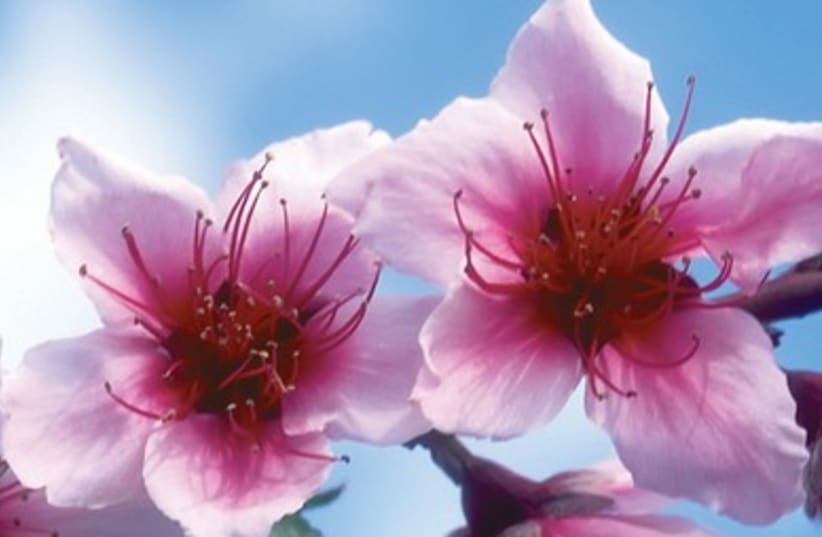
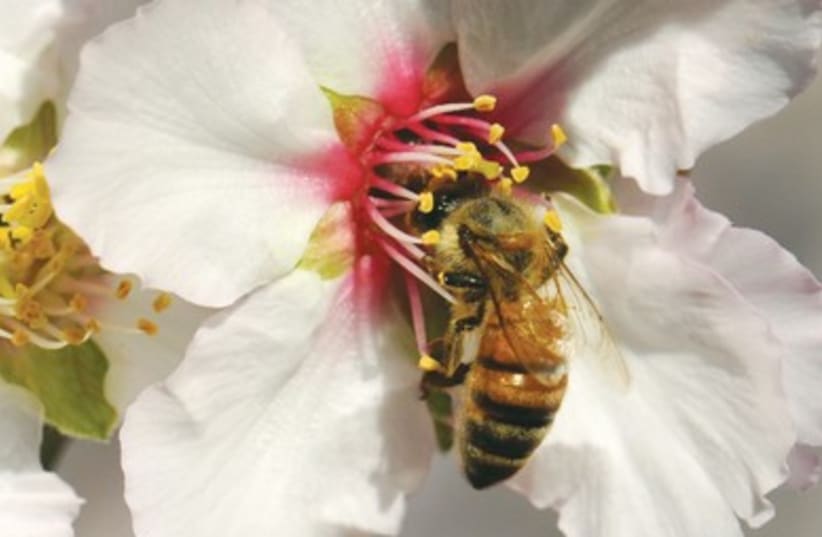
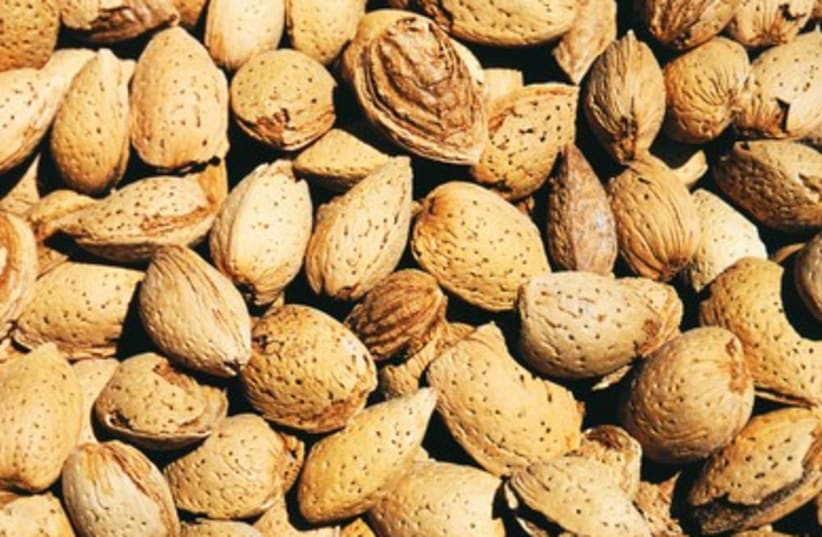
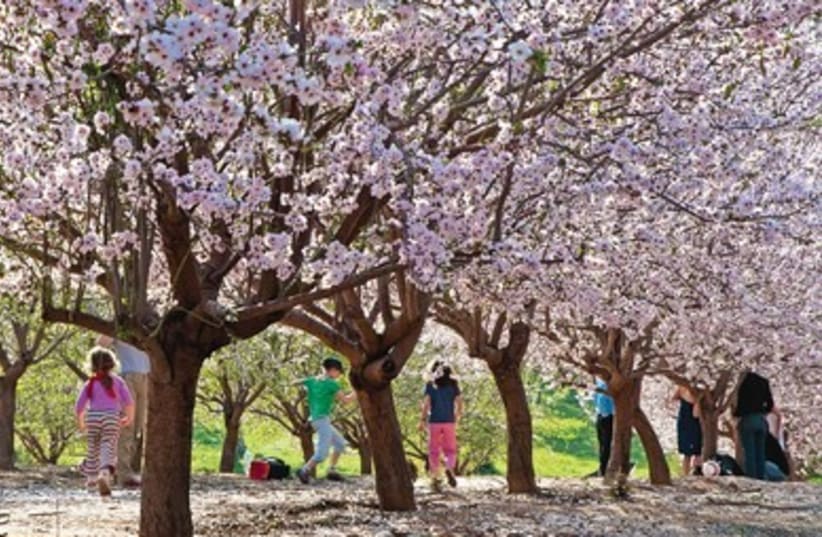
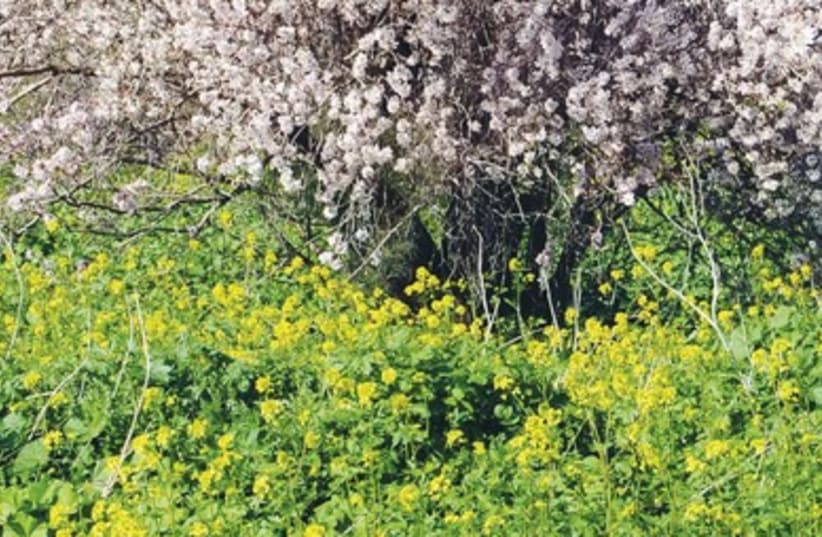
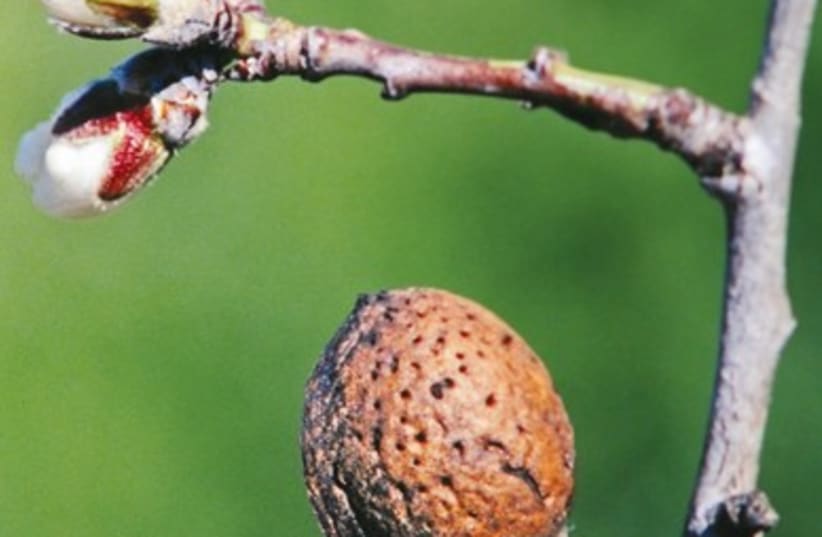
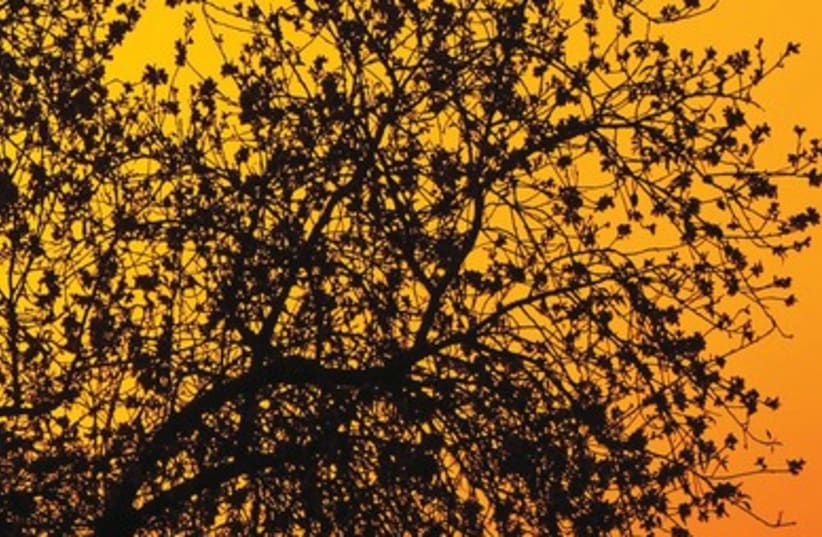

This month, the almond tree is covered in thousands of pinkish white flowers all over its branches, before its new leaves sprout. The sight of wonderful white blossoms that have become the symbol of Tu Bishvat signal that spring is coming.The almond tree, which originated in western Asia, was cultivated by man thousands of years ago. It is mentioned in the Bible at the time of Joseph and his brothers around 3,700 years ago.These trees are found all over the northern half of Israel and in some parts of the Negev. The beautiful flowers of the almond tree give off a pleasant scent and produce nectar that attracts bees and other insects for pollination. In March, the almond tree loses its flowers. The fertilized flowers are replaced by almonds, which will be ripe only six months later. This fruit contains small amounts of cyanide, which makes it dangerous to eat large amounts of bitter almonds from wild almond trees. Nevertheless, cultivated almond trees are appropriately treated, resulting in much less harmful agents and large quantities of protein, vitamins and minerals.Almond orchards are especially plentiful in the Judean lowland and the Galilee. The wild almond tree is protected in Israel, so observe and enjoy its beautiful blossoms and prepare yourselves for spring, which is just around the corner.
